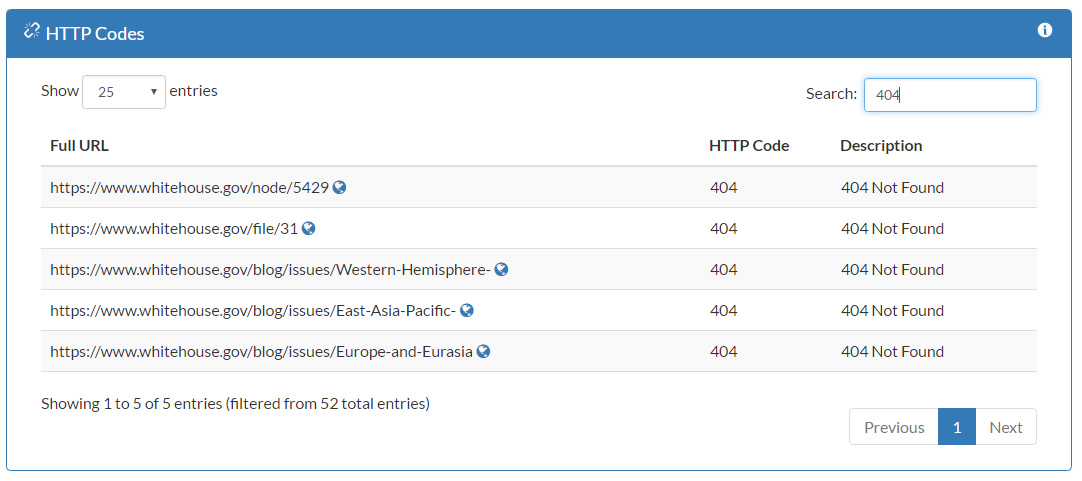HTTP Codes¶
This test looks at Hypertext Transfer Protocol (HTTP) response status codes. Careful consideration should be given to these as they deviate from the 2xx codes which indicate a successful delivery of the page.
There are multiple errors that we catch. The most frequent codes can be found below:
-
HTTP code 301 Moved Permanently: This and all future requests should be directed to the given URI
-
HTTP code 302 Moved Temporarily: This is an example of industry practice contradicting the standard. The HTTP/1.0 specification (RFC 1945) required the client to perform a temporary redirect
-
HTTP code 400 Bad Request: The server cannot or will not process the request due to an apparent client error (e.g., malformed request syntax, too large size, invalid request message framing, or deceptive request routing).
-
HTTP code 401: Similar to 403 Forbidden, but specifically for use when authentication is required and has failed or has not yet been provided.
-
HTTP code 403 Forbidden: The request was a valid request, but the server is refusing to respond to it. The user might be logged in but does not have the necessary permissions for the resource.
-
HTTP code 404 Not Found: The requested resource could not be found but may be available in the future. Subsequent requests by the client are permissible.
-
HTTP code 500 Internal Server Error: A generic error message, given when an unexpected condition was encountered and no more specific message is suitable.
-
HTTP code 503 Service Unavailable: The server is currently unavailable (because it is overloaded or down for maintenance). Generally, this is a temporary state.
The results view shows the page URL, the HTTP code and the description of the code. You can use the search feature to show specific codes only.
